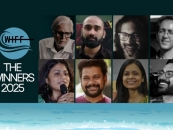
No Dark Sarcasm In The Classroom
by Shiv Bhalla November 14 2016, 6:13 pm Estimated Reading Time: 4 mins, 39 secs“The task of the modern educator is not to cut down jungles, but to irrigate deserts.”
― C.S. Lewis
Finland’s education system indexes as one of the best globally. This is due to revolutionary education reforms that were implemented forty years ago. Taking a progressive approach, Finland chose to go against the grain and set up a system in direct contradiction to the educational values held by the majority at the time; emphasizing freedom and creativity over the institutional approach almost military in its emphasis of discipline and conformity. The developed world has since then come a long way, inching closer to the vision that Finland pioneered. The developing world however, is steeped in archaic education paradigms and suffers from fundamental systemic problems rendering the system counter intuitive to its purpose; gargantuan barriers guarding the steep curve, almost invisible to those on its precipice.
The fundamental difference between the Finnish system and traditional education lies in the status that both students and teachers hold in society. In India, students are expected to be obsequious; the syllabus and examination system emphasises rote learning with minimized nuance and dynamics. Students are equipped with neither the skills nor the discretion to navigate their careers or lives. Teachers, on the other hand are overworked and underpaid. The expected standard is far below modest and the sheer volume of students proves even microscopic reform to be virtually unattainable. Juxtaposed with Finland, the systemic overhaul required of a country like India is daunting to even the most accomplished and visionary in the field. Initiatives beginning from the grassroots grind on at sluggish pace; the only tangible reforms are seen in the infinitesimal minority occupied by international schools based in large metropolitan cities.
On the Finnish end of the spectrum, schooling is 100% state funded. Students are viewed in synonymy with adults, entrusted with franchise over their choices and decisions. The approach is organically tethered to the growth of a student’s capacity and aptitude, and onus of discipline is handed over to both the parent and the student. Motivation is harnessed through achievement, discipline through trust and emphasis remains on learning rather than examinations. Students are not graded for the first six years if their academic career, which they do not begin until they are seven, with homework handed only after their early teens. They are expected to give just one mandatory standardized test at the age of sixteen. Finnish students get seventy five minutes of recess, contrasted by the standard thirty minutes students get in India. By minimizing the level of pressure on the student, the Finnish system has proven that the pressures of testing, grading and performance hinder a student’s progress along the learning curve as well as his/her mental health. 66% of Finnish students go to college, which is the highest rate in all of Europe. 93% graduate high school and 43% complete courses at vocational schools.
“Spoon feeding in the long run teaches us nothing but the shape of the spoon.”
― E.M. Forster
Teachers in Finland occupy a status at the upper echelons of society, sharing position, influence and salary value with doctors and lawyers. To maintain impeccable standards for teachers it is mandatory for Finnish schools to select teachers from the top 10% of graduates from master’s degrees, subsidized by the government. The classroom, the role of the teacher and the curriculum are designed to allow students to organically navigate subjects and material. A broad curriculum ensures a well rounded and pluralistic world view. Teachers have the drive and impetus to perform their duties with sustained enthusiasm and vigour as they spend no more than four hours a day in the classroom. This unburdens them, allowing time plan lessons and to contemplate and focus on individual weaknesses students may have. A classroom limited to sixteen students gives the teacher the room to focus on students individually as well as allows for practical exposure to their learning especially in the form of experiments for scientific subjects. On average, 30% of students in Finland receive extra help from teachers; as a result, the difference between the strongest and weakest students is the least in the world.
“Do not train a child to learn by force or harshness; but direct them to it by what amuses their minds, so that you may be better able to discover with accuracy the peculiar bent of the genius of each.”
― Plato
Once practices and beliefs are adopted by a critical mass of individuals, revolution spreads at viral velocity. Educational reforms from a frozen corner of Europe are still obscured by a monumental farce folding in on its own gravity, a black hole if you will. The young and impressionable caught in the event horizon. Will the metaphorical exhausted star have explode due to its own density before lost minds of the next generation are illuminated?
“Have you ever been at sea in a dense fog, when it seemed as if a tangible white darkness shut you in and the great ship, tense and anxious, groped her way toward the shore with plummet and sounding-line, and you waited with beating heart for something to happen? I was like that ship before my education began, only I was without compass or sounding line, and no way of knowing how near the harbor was. “Light! Give me light!” was the wordless cry of my soul, and the light of love shone on me in that very hour.”
― Helen Keller




-173X130.jpg)
-173X130.jpg)
-173X130.jpg)
-173X130.jpg)
-173X130.jpg)

-173X130.jpg)
